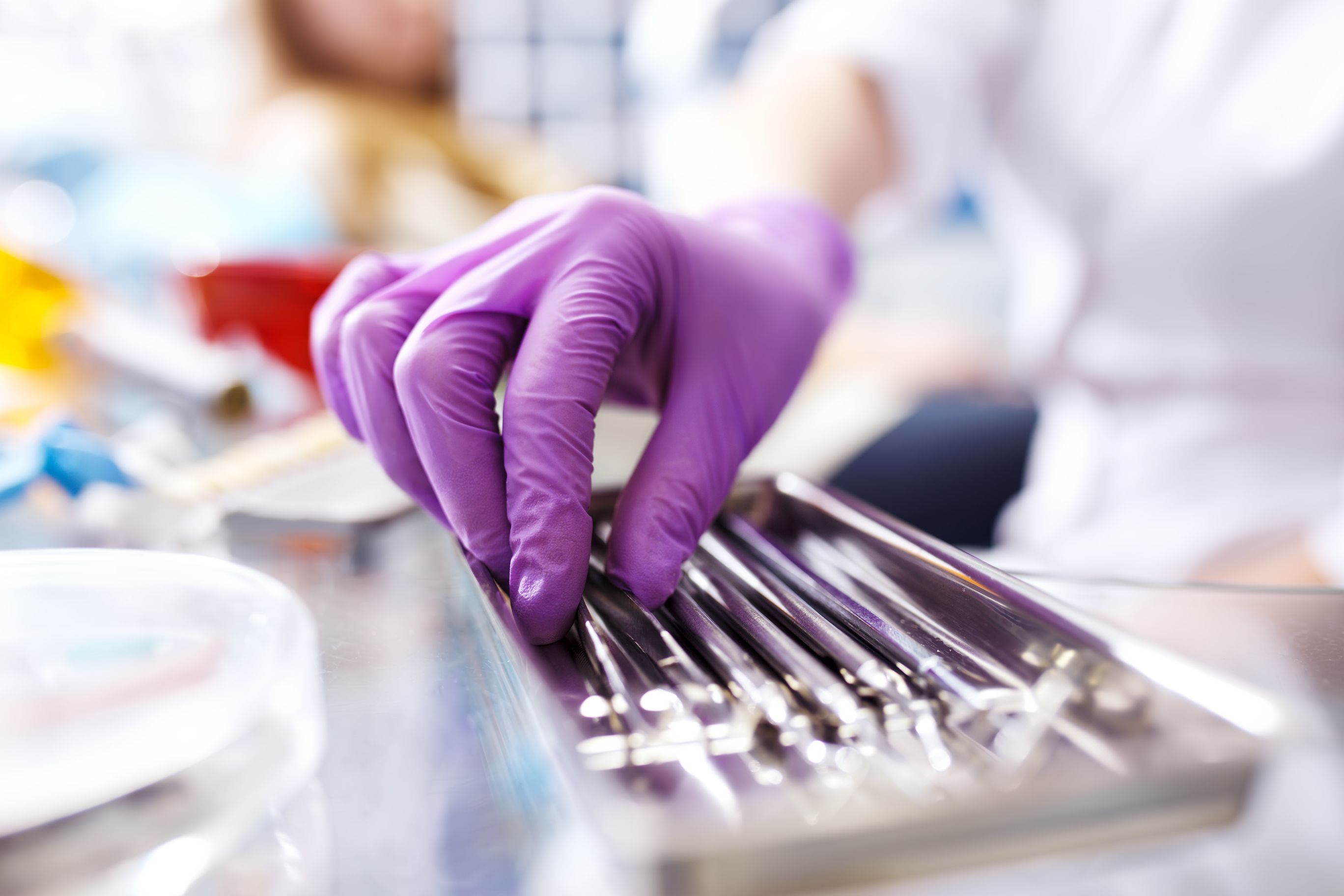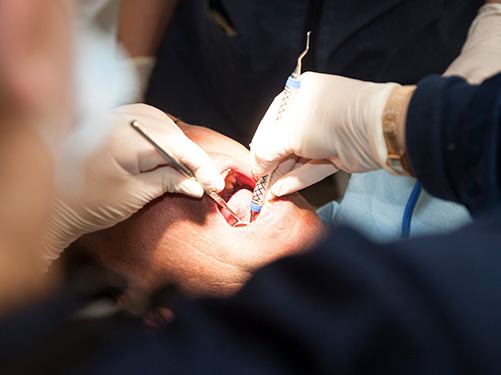Did you know that...? - June 30, 2020
We can all agree on the historical significance of the period we're currently living in, a period that is bringing changes in our way of socialising, as well as our clinical practice. Given the parchment and the qualification we've been granted, we continuously dive into congresses and courses, driven by an insatiable thirst for knowledge... knowledge of new technologies, new scientific evidence, new clinical approaches and protocols. All of this, because we want to keep up and be in step with the novelties. Now, pause for a moment and think about this. Can we "keep up and be in step" during the COVID-19 pandemic, when the aerosols need to be contained to the maximum? It seems a total contradiction.
Taking a look back to the year 1980, the first cases of an unknown syndrome, later called AIDS, was observed in the USA, gradually spreading to Europe and England. Initially, researchers were tapping in the dark and newspapers did not spare any stigmatisation of gay people. The virus isolated was isolated only 3-4 years later was, and in 1986 it was named HIV (https://www.epicentro.iss.it/aids/storia). In the following years, a period of panic in the medical and health field, including dentistry, ensued, leading to the biohazard prevention procedures that we still adopt every day to avoid contagion and cross-infection in our clinical practice.
Using manual techniques
Keeping this in mind, we may realise that today, at this point, we are still at that stage where we are trying to understand more about the virus, and putting in place a whole series of practices to prevent contagions. The story appears somewhat cyclical.
Therefore, in addition to the indications in force so far on PPE, there are also operational indications. What will be discussed in this article, thus, is the containment (if we want to be permissive), and possibly the elimination (if we are categorical) of aerosols, given that the saliva has been identified as a reservoir of the virus in infected patients (Izzetti et al. 2020). The question we ask ourselves is: is it possible to convert our clinical practice, and successfully, to using only manual techniques?

In the periodontal and implant field, this translates into cornering sonic/ultrasonic instruments and air-polishing systems. This presents itself as a change in our clinical routines and protocols, a situation that can throw us into discomfort or a kind of performance anxiety because it pushes us out of our comfort zone. In fact, we all agree that the use of curettes is a real, proper, complex manual skill, which not everyone has perfected. What comes to my mind is Prof. Graziani, always repeating: "It's all a work of the arms, not of the fingers or the wrist".
However, in terms of periodontal treatment, scientific studies highlight the equivalent effectiveness between the correct manual subgingival instrumentation and that performed with sonic/ultrasonic instruments (Suvan et al. 2019). So what can be the critical points? The first one is the one mentioned above, i.e. having matured a correct manual skill for the use of manual instruments, risking to be ineffective in the removal of subgingival biofilm and calculus or to modify the root surface. Another observation concerns the physical and mental effort, which undoubtedly increases if one renounces the use of mechanical instruments. Despite everything, it is feasible!
While, if we move into the field of implant prophylaxis, different considerations must be made. We always assume that our goal is to maintain the health of peri-implant tissues, preventing mucositis and peri-implantitis. As defined in the last World Workshop on the Classification of Periodontal and Peri-implant Diseases and Conditions, peri-implantitis is a plaque-related pathological condition that manifests itself in tissues surrounding the implant and is characterised by the inflammation of the mucosa, with subsequent loss of bone support (Berglundh et al., 2018). Therefore, we know that the main aetiological factor of peri-implantitis is the accumulation of bacterial biofilm on the implant surface, and our goal is its effective removal. In these situations, the use of air-polishing systems is the most efficient in terms of disintegration of the bacterial biofilm and preservation of the integrity of the implant surface and threads.
In this regard, I bring to your attention an interesting in vitro study by Cha et al (2019). 72 implants with sandblasted and etched surfaces, divided into 5 groups and treated by the same operator for a time of 120 seconds were analysed. The following instrumentation protocols were performed: use of a metal tip for ultrasonic instruments, a PEEK insert, a round rotating titanium brush (R-Brush), a titanium filament insert for implants (TN-Brush) and subgingival air-polishing with glycine. The results of the study show significant alterations of the threads treated with the metal tip, slight alteration with the PEEK insert, while the implants treated with the R-Brush and TN-Brush inserts show an overall polished appearance and homogeneous surface modification. Finally, surfaces treated with glycine powder show minimal changes.
Conclusions
This period is a question of how we approach new challenges. We know very well what it means to wake up every day and prepare for a day of goals that we aim to achieve; seeing on the agenda the name of a new periodontal patient, of our old patients which requires from us continuous remotivation, or the patient who is experiencing bereavement and we are unsure what we can expect when they enter through the doors of our office. We may start an endless discussion on the patient profiles that need to be motivated. However, at this moment, it is even more essential, on the one hand, to strengthen the motivation in periodontal patients, but above all, implant patients. On the other hand, we need to take the challenge from an empathic and conceptual level to a manual one, to be able to follow the operative indications and the containment of the aerosol better. Lastly, we should build confidence that this can be a parenthesis, not sad, but constructive. We must be proactive and react in line with science and conscience, with all the limits of the case.

Literature and suggested reads:
Izzetti , R., Nisi, M., Gabriele, M. & Graziani, F. (2020). COVID-19 Transmission in Dental Practice: Brief Review of Preventive Measures in Italy. Journal of Dental Research, 2020 Apr 17:22034520920580. https://www.ncbi.nlm.nih.gov/pubmed/32302257
Suvan, J., Leira, Y., Moreno, F., Graziani, F., Derks, J. & Tomasi, C. (2019). Subgingival Instrumentation for Treatment of Periodontitis. A Systematic Review. Journal Clinical Periodontology. https://www.ncbi.nlm.nih.gov/pubmed/31889320
Cha, J. K., Paeng, K., Jung, U. W., Choi, S. H., Sanz, M. & Sanz-Martín, I. (2019). The Effect of Five Mechanical Instrumentation Protocols on Implant Surface Topography and Roughness: A Scanning Electron Microscope and Confocal Laser Scanning Microscope Analysis. Clin Oral Implants Res. 2019 Jun;30(6):578-587. https://pubmed.ncbi.nlm.nih.gov/31022305
Berglundh, T., Armitage, G., Araujo, M. G., Avila‐Ortiz, G., Blanco, J., Camargo, P. M., … Zitzmann, N. (2018). Peri‐implant diseases and conditions: Consensus report of workgroup 4 of the 2017 World Workshop on the Classification of Periodontal and Peri‐Implant Diseases and Conditions. Journal of Periodontology, 89(Suppl 1), S313–s318. https://pubmed.ncbi.nlm.nih.gov/29926955/
